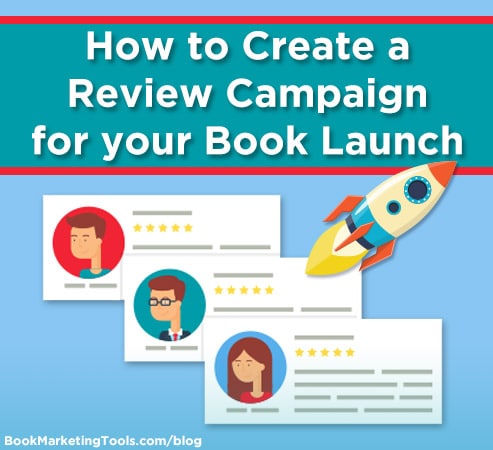Let’s be honest for a minute.
Generating reviews can be tough. It’s not always easy asking strangers to help you out, which is why some authors resort to buying five-star Amazon reviews from sites like Fiverr.com. Although gaming the system this way could boost your sales rank and attract new readers, it also taints your success. It makes readers suspicious and damages your credibility. You only have to ask self-published authors like John Locke whose review scandal was compared to the likes of Lance Armstrong’s doping debacle when it eventually hit the headlines—and it did hit the headlines. With the illusion of truth broken, there may be no recovering from the fallout with readers—which just isn’t worth it.
Honest, authentic reviews are the result of connecting with readers and either exceeding or failing their expectations. Contrary to what some authors might believe, however, getting reviews isn’t a waiting game. What you need is a system to ensure you’re predictably and steadily bringing in reviews from the moment you hand out your first advance reader copy (ARC).
So, let’s get to it.
Preparing for a Review Campaign
Before you start hitting people up for reviews, there are a few things you need to do in preparation.
- Set a timeline for your review campaign. Although you’ll want to create a long-term strategy in the context of your overall book marketing efforts, this timeline needs to be specific to the launch for this particular book. Ideally, you’ll want to start as early as possible and then drive reviews for a few months after launch day (depending on when your launch campaign ends). An early start will allow you to build relationships and contacts so that you’ll obtain the quantity and quality of reviews you need for a successful outcome.
- Set review goals. Setting milestones can help keep you motivated, but it’s also important to base your goals on your launch campaign objectives. If your goal is to generate 100 4-5 star reviews by a certain date, then you should use this goal to set a realistic pace for the efforts you need to put in for garnering reviews.
- Prepare your ARCs. With the advent of ebooks, it’s more common now for ARCs to be distributed in digital format. Whether you want to send a print copy or ebook will depend on who you’re sending an ARC to for review. Either way, it should include a disclaimer on the cover stating that it’s an Advance Reader Copy. It should also be marked as an uncorrected proof that’s not for sale and incorporate details such as the number of pages, price, and release date.
Here’s an example:

- Create a spreadsheet to keep track of your campaign. You’ll want to create columns for the potential reviewer’s name, email address, and website URL. You’ll also want to add columns for the date you sent your review pitch, the person’s answer to your request, the shipping address for those who require printed ARCs, the date you sent the copy, the date the review was published, and the date you sent a thank you note. If you like, you can also include information about your connection to that person (i.e. book blogger, media contact, influencer, family member, friend, street team member, etc.).
Now let’s explore exactly how to get those valuable reviews.
How to Solicit Reviews like a Pro
Although you want to rack up reviews on Amazon, don’t forget that all your distribution platforms need some review love. Depending on your strategy, consider splitting up your campaign tactics to drive reviews to certain platforms. You’ll also want to ensure your book pages on sites like Goodreads garner plenty of attention from reviewers. The key is to keep the flow of reviews consistent.
Here are our top tactics for soliciting reviews in a non-scammy way:
- Leverage Your Pool of Insiders
Your list of insiders includes family, friends, colleagues, fellow authors you know well, street team members, and anyone else who has expressed their willingness to lend a hand with your book launch or writing career. Go through this list to find people who would consider the exchange of your book for a review mutually beneficial and then create an email to get them on board with reviewing your book.
Here’s a basic email template you can adapt accordingly. Keep in mind that it should be highly personalized—you’re leveraging an existing relationship, not selling to a stranger.
Email Template (Sent 6-8 weeks before launch)
Hey [Insert name],
I hope you’re well! [Include other pleasantries that would help create a warm opening]
Over the last few months, I’ve been working on [insert book name]—my new book about [insert short description]. I’m so excited to announce its release on [insert launch date].
The reason I’m emailing is because customer reviews are essential to an author’s success and I would greatly appreciate your help with this.
Can I send you a free advance copy of my book? My only request is that you leave an honest customer review on [insert launch date].
I’d be happy to send a digital or print version. If you want a print copy, just let me know where to send it, and I’ll drop it in the mail.
Thank so much!
[Your name]
For those who agree to your request, be sure to send them a reminder or two closer to the time so that they don’t forget to publish their critique on launch day. If you like, you can add a set of instructions to make the reviewing process as easy as possible.
- Take Advantage of Your Networks and Writing Platform
If you’re in writing groups, book clubs, author circles, or other online and offline communities, you have an audience. If you’re blogging, using social media, or networking with others in your genre or field, you have an audience. Many of us tend to forget that the simplest way to generate reviews is by asking. Create blog posts with a call to action, write social media posts requesting reviews, and reach out to your networking groups for help. Many people are eager to help those who have been invaluable to their community.
- Use a Professional Reviewing Service
The reputation and trustworthiness of well-known services like Kirkus Reviews, Forward Reviews, and Readers’ Favorite can help you level the playing field against traditionally published authors. While these editorial reviews might not result in a significant sales boost, they will help you gain credibility and recognition. In fact, many authors have captured the attention of agents, publishers, filmmakers, and industry influencers by purchasing and publishing a book review through these professional services. To make the most of these reviews, highlight them on your Amazon Author Page and in the Editorial Review section of your book’s Amazon product page.
- Include a Call-To-Action in Your Book’s Back Matter
Avid readers tend to devour a new book quickly, but don’t always remember to leave a review. By adding a note to your book’s back matter, you can thank them for reading while encouraging them to provide their feedback. A simple call-to-action like “Want to let others know what you think? Make your opinion known by leaving a review here: [direct link to review page]” will do the trick.
- Capitalize on the Influence of Book Bloggers
There’s a special group of people online who love to read and review books—often just for the fun of it. Not only have they created blogs in every genre you can possibly imagine, but they’ve also immersed themselves in social media, book clubs, and online groups to create active and engaged communities of readers. Their reach is considerable, and their influence is just as phenomenal. These people are book bloggers, and they are your new best friends.
By building genuine, meaningful relationships with these individuals and contributing valuable insight to their community, they’re going to be far more likely to review your book and build some buzz around your launch. You can find book bloggers on social media sites using search terms and hashtags like #bookblogger, #bookreview, and #bookreviewer. You can also use online directories like the Best Review Blogs, The Book Blogger List, Story Cartel, and The Indie View.
When searching for book bloggers, make sure you look for reviewers in your genre and that you read any submission guidelines provided. Focus on sites where your target reader is likely to stop by in search of a new book. Be sure to seek out bloggers and submit your ARC well in advance as there’s often a backlog.
- Let People Know You Included Them
If you’ve mentioned, featured, or quoted someone in your book, let that person know. Besides potentially generating a review, you might get some free exposure out of the deal—especially if you have similar audiences.
Here’s a template you can personalize for your own use:
Hey [insert name],
I’m just emailing to let you know that I’ve published a book about [insert short book description] and you’re in it!
[Explain how the person is featured, which quote you used, etc.]
If you want to check it out, you can grab a free copy here: [insert download link]
If you enjoy it, please consider leaving a review on Amazon—it’s always appreciated.
Have a great day!
[Your name]
Again, you can include instructions on how to leave a review or other bits of information that might be relevant to their inclusion in your book.
- Create a Free Promo
A free promotion during your launch period is not only a great way to encourage downloads, but it’s also an amazing tool for garnering reviews organically. An increase in readers means you have a greater chance of collecting reviews. Combine this with tactic #3, and you’ll be rolling in the praise. Simply enroll your book in a free promo with Amazon’s KDP Select feature and then promote your freebie across all marketing channels, including book promotion sites like ReadingDeals and BookBub.
- Give a Public Shout Out to Specific Reviewers
By publicly thanking specific people who have already taken action and left a review, you can inspire others in your network to take action too. It also translates to more goodwill for you and your book. Simply create a social media post along the following lines:
A special thanks to [insert list of reviewer names] for making it happen with your awesome reviews. You guys ROCK!
When more people review your book as a result of this, make sure you create a second post that thanks them too. You’ll be surprised by how effective this tactic can be.
If there’s one takeaway from this post, it should be that you need to be proactive when seeking out reviews. The wheels of e-commerce run on positive reviews, which is why there’s zero room for a passive approach. If it seems overwhelming, start small. The ultimate goal is to create some form of social proof so that “cold” readers landing on your product page for the first time can see your book is relevant and worth the investment.
What’s your secret to generating great reviews for your books? Share your tips and tactics with us in the comment section. Be sure to subscribe to our blog for more on book launches, reviews, and other book-related goodness before grabbing a copy of our book launch checklist below.


